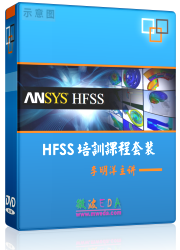Technical Notes > Radiated Fields > Antenna Parameters
Incident Power
Incident power for an antenna structure is defined in terms of accepted power under special conditions. In HFSS the incident power flow on a transmission structure is defined as the accepted power when that structure is terminated in a conjugate-matched load. Thus we write a general definition:
|
|
(1) |
For a transmission structure that may be modeled with a real characteristic impedance, this definition is equivalent to the zero-reflective case where the transmission structure is terminated in a matched load. For example, in the simple example discussed in this section on accepted power, setting S11 = 0 produced the incident power as:
|
|
(2) |
However, there is an important difference in the case of Lumped ports with complex impedance, and Wave ports renormalized to complex impedance. In these cases, the conjugate-match and zero-reflection definitions of incident power give different results, but only the conjugate-match definition used by HFSS enforces the important property that Pacc<Pinc.
In the Edit Sources window of a terminal project, you specify total voltage V instead of the modal incident power. Using the underlying modal S-matrix, HFSS converts the terminal excitation to total fields at the ports, and then applies the general definition. As a result of this procedure, the incident power in a terminal project depends on both the user-specified stimulation as well as the model itself.
Related Topics
Computing Antenna Parameters
-

国内最全面的HFSS培训课程,包含7套视频教程和2本教材,资深专家讲解,视频操作演示,结合最新工程案例,让HFSS学习不再难...【详细介绍】





